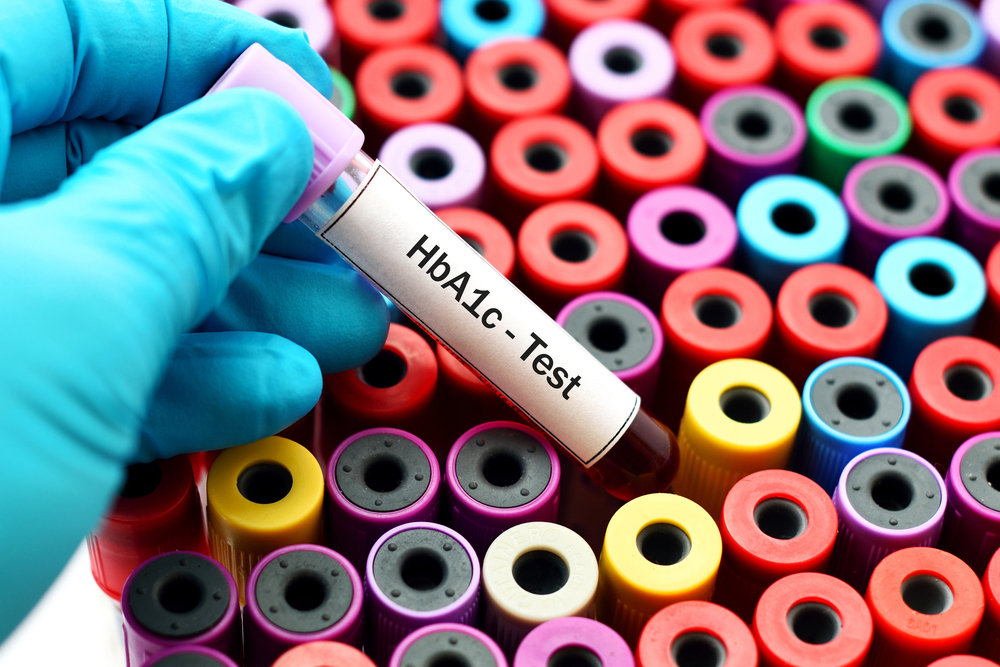Recognizing Symptoms for HbA1c Testing: When to Check Your Blood Sugar Levels
- 1 Apr, 2024
- Written by Team Dr Lal PathLabs
Medically Approved by Dr. Seema
Table of Contents

Effective diabetes management relies on regularly monitoring and maintaining healthy blood sugar levels. The HbA1C test can help achieve this by providing a detailed overview of blood sugar levels over an extended period. It helps patients track the effectiveness of their diabetes management strategies and make timely adjustments.
This article explores the symptoms that necessitate HbA1c testing and the frequency of such tests for different individuals.
What is HbA1c testing?
HbA1c testing, also known as the haemoglobin A1c or glycosylated haemoglobin test, is a blood test used primarily to monitor and manage diabetes. It measures the percentage of glycated haemoglobin in the blood, which reflects the average blood glucose levels over the past two to three months.
This test is crucial because it provides a longer-term picture of blood sugar control, unlike daily blood glucose tests that fluctuate with meals, exercise, and other immediate factors. HbA1c testing helps in diagnosing diabetes, identifying pre-diabetes, and evaluating how well diabetes is being managed.
How is the HbA1c test performed?
HbA1c test is a straightforward and painless procedure commonly used to measure long-term blood sugar control in individuals. It is usually performed in a clinical setting, such as a doctor’s office or a laboratory and involves drawing a small amount of blood from the patient.
This can be done either by pricking a finger to obtain a blood sample or by drawing blood from a vein in the arm. The finger-prick method is quick and can sometimes be done with a portable device, providing immediate results. There is no fasting required for HbA1c testing.
Interpreting HbA1c Test Results
HbA1c test results can be interpreted as follows:
- Normal: HbA1c level below 5.7%.
- Prediabetes: HbA1c level between 5.7% and 6.4%.
- Diabetes: HbA1c level of 6.5% or higher on two separate tests.
What are the symptoms of HbA1c testing?
Understanding the symptoms that necessitate HbA1c testing is crucial for the timely diagnosis and effective management of diabetes. Key high HbA1c symptoms that necessitate testing include:
- Frequent Urination and Increased Thirst: Elevated blood sugar levels can cause the kidneys to filter out excess sugar. This leads to increased urination and consequent dehydration, which then results in heightened thirst.
- Unexplained Weight Loss: Inadequate energy extraction from food can prompt the body to burn muscle and fat, resulting in weight loss.
- Fatigue: Ineffective insulin utilisation or insufficient insulin levels can lead to a lack of energy, causing fatigue.
- Blurred Vision: High blood sugar levels may cause swelling in the eye’s lens, leading to blurred vision.
- Slow-Healing Sores or Frequent Infections: Elevated sugar levels in the blood can hamper the body’s ability to heal and resist infections. This manifests as sores, rashes and infections.
These symptoms are directly linked to high blood sugar levels, which is a precursor to diabetes or indicative of poorly managed diabetes if already diagnosed. HbA1c testing will provide a clearer picture of average blood sugar levels over an extended period, enabling healthcare providers to determine if there’s a need to start or modify the diabetes treatment plan.
When to check blood sugar levels?
Monitoring blood sugar levels is vital for managing diabetes effectively. The frequency and timing of checks can vary depending on individual circumstances and the type of diabetes.
- Type 1 and Type 2 Diabetes
The HbA1c test is crucial for confirming the diagnosis of diabetes. For individuals already diagnosed with diabetes, it is recommended to undergo HbA1c testing every three to six months. This frequency is crucial to monitor the effectiveness of diabetes management and control.
- Adjusting the Diabetes Management Plan
In cases where there is a change in medication or insulin therapy, an HbA1c test is advised. This helps in evaluating the impact of the new treatment plan on blood sugar control.
- Special Circumstances
i. Pregnancy: During pregnancy, especially in cases of gestational diabetes, more frequent HbA1c testing may be required. This is to ensure both maternal and foetal health is maintained.
ii. Prediabetes: For those with prediabetes, periodic HbA1c testing is important to monitor blood sugar levels and to prevent the progression to full-blown diabetes.
FAQs
1. How does HbA1c testing differ from regular blood sugar testing?
While regular testing measures current blood sugar levels, providing immediate, variable results, HbA1c testing gauges long-term blood sugar control by assessing the percentage of glycated haemoglobin, reflecting average glucose levels over the past two to three months.
2. Can HbA1c testing be done at home?
Yes, HbA1c testing can be performed at home using specific home test kits. These kits usually require a finger-prick blood sample and provide results within a few minutes. However, for accurate diagnosis and management, it’s recommended to have HbA1c tests performed and interpreted by healthcare professionals or trusted labs.
3. How to manage high HbA1c symptoms?
To manage high HbA1c levels, focus on a balanced diet, regular physical activity, and consistent medication adherence if prescribed. Monitoring regular blood sugar levels helps track daily fluctuations.














